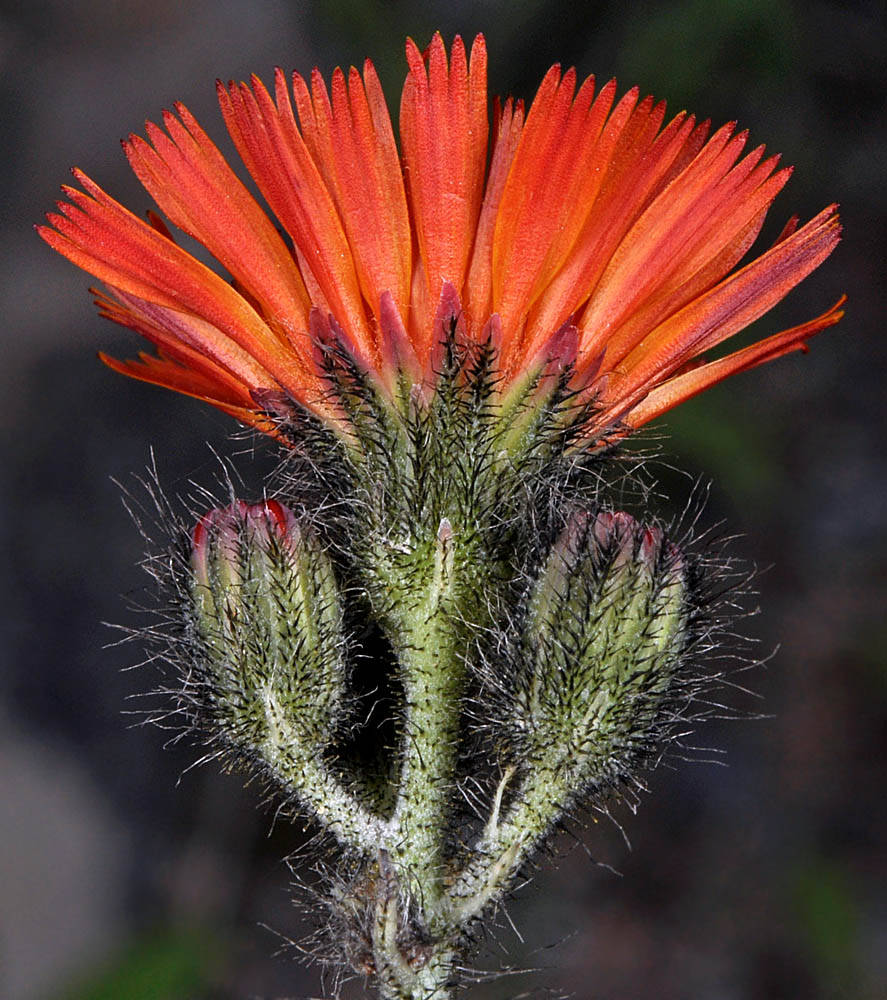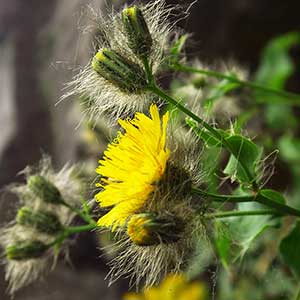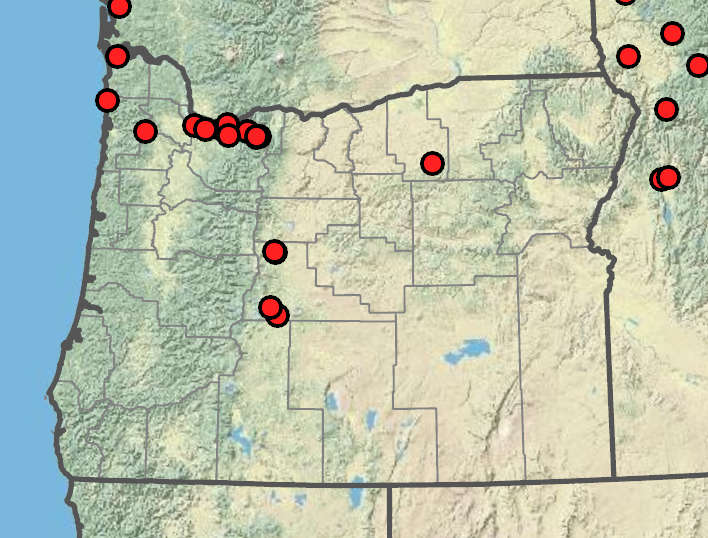Hieracium aurantiacum
Hieracium longiberbe
devil's paintbrush, king-devil, orange hawkweed
long-bearded hawkweed
erect; simple, pilose-hispid, usually also stipitate-glandular, tomentulose distally.
simple or branched, glabrous or pilose.
basal, sometimes 1 near stem base, oblanceolate, 5–20 cm;
margins entire;
tips acute or obtuse;
surfaces pilose-setose;
petioles short, winged.
cauline, rarely a few basal early, spatulate to oblanceolate, 5–15 cm, bases attenuate;
margins entire or rarely denticulate;
surfaces glabrous to lightly or densely pilose-setose, usually sessile.
raceme- or panicle-like arrays, bracteate or not.
panicle- or raceme-like arrays, bracteate or not.
campanulate in flower; ovoid in fruit, 6–8 mm.
campanulate in flower; ovoid in fruit, 7–10 mm.
25–100+;
ligules 10–15 mm; reddish orange, drying purplish.
12–30;
ligules 10–15 mm, yellow.
linear-lanceolate;
surfaces blackish stipitate-glandular, usually setose-hispid; inner 13–30; outer > inner.
linear-lanceolate;
surfaces densely long-setose with brown or black hairs; inner 10–16; outer gradually shorter.
columnar, 1.2–2 mm, dark brown.
columnar, 3–4 mm, brown.
=18, 27, 36, 45, 54, 63, 72.
Hieracium aurantiacum
Hieracium longiberbe
Disturbed areas, roadsides, clearcuts, riverbanks, pastures. Flowering Jun–Aug. 100–1400 m. BW, Casc, CR, ECas. CA, ID, NV, WA; scattered in North America; Europe. Exotic.
Hieracium aurantiacum is a conspicuous and well-known weed over much of the United States and southern Canada. Its scattered distribution in Oregon indicates an ability to disperse by seed, and once established it may persist and spread by both seeds and stolons.
Rocky slopes and cliffs, open woods. Flowering May–Aug. 0–600 m. Casc. WA. Native.
This species is limited to the Columbia River Gorge and its immediate vicinity. Its distinctive, densely pilose-setose involucres, lacking either tomentulose or stipitate-glandular pubescence, distinguish it from the closely allied species Hieracium scouleri, a widespread taxon whose numerous pubescence variants are not correlated with any particular geographical areas. Hieracium longiberbe and H. scouleri were shown to be sister taxa in a molecular phylogenetic study by Gaskin and Wilson (2007).
Kenton Chambers
Kenton Chambers





